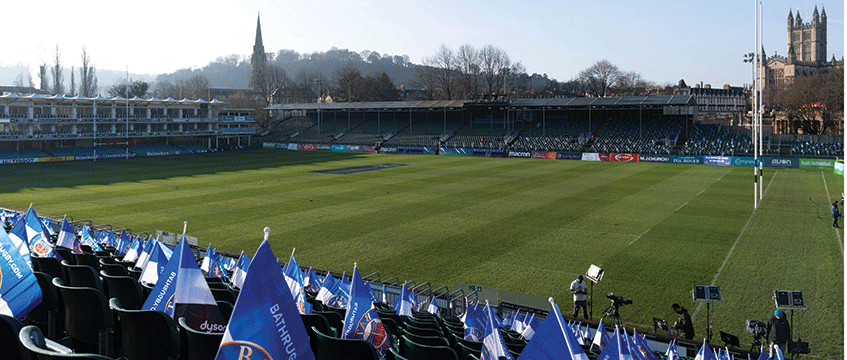While Bath Rugby is having a torrid time on the pitch (currently rooted to the foot of the Premiership), it at least ended 2021 with a major legal victory (Bath Rugby Ltd v Greenwood and others [2021] EWCA Civ 1927; [2021] PLSCS 220), which paves the way for it to build a new stadium at its historical home in central Bath.
The litigation concerned one of the most technical and complex areas in the whole of property law. Namely, the rules governing whether the benefit of a restrictive covenant has been “annexed to” land so as to “run” with that land on subsequent dispositions. As practitioners in this area will know all too well, navigating a course though the intricacies of the principles contained in the mountain of authorities about annexation, not all of which point in the same direction, is far from straightforward.
Legal principles
The modern law about the annexation of the benefit of covenants was formulated in the wake of the famous case of Tulk v Moxhay [1848] 18 LJ Ch 83. A covenant to maintain the garden in Leicester Square free from buildings was held to be enforceable by injunction against a purchaser of Leicester Square who bought with notice of the covenant. Thus was invented a new equitable interest in land. In consequence, an agreement restricting what can be built on land, or an agreement restricting the use that can be made of land, can burden land indefinitely.
Having invented this new equitable interest in land, the judges sought to keep it in check. In the latter half of the 19th century, they came up with various devices to try to ensure that restrictive covenants did not clog up the title to land in a way that would impede development to an undesirable extent.
In doing so, the judges sought to address a concern about the identification of any land to which the benefit of a restrictive covenant might be annexed. If a conveyance grants an easement over servient land but fails expressly to identify the dominant land, the identity of the dominant land is usually obvious. The dominant land of a right of way will be the land to which the right of way provides access. Any rights of light over land will be enjoyed through the apertures of any windows overlooking the servient land.
However, if my predecessor in title has agreed not to build on my land, that might do little to help me identify any land intended to benefit from that restriction.
So the courts established requirements about the identification of any benefitted land to which a covenant might be annexed. In Newton Abbott Co-operative Society Ltd v Williamson & Treadgold Ltd [1952] Ch 286, Upjohn J said: “In this difficult branch of the law, one thing in my judgment is clear, namely that in order to annex the benefit of a restrictive covenant to land… the land for the benefit of which is taken must be clearly identified in the conveyance creating the covenant.”
In particular, it was held that:
- There must be something in the document creating the covenant (rather than merely the surrounding circumstances) to define the benefitting land.
- Any land intended to be benefitted must be so defined as to be “easily ascertainable”.
The facts of Bath Rugby
Bath Rugby is one of England’s oldest rugby clubs. It was founded in 1865 by members of the Lansdown Cricket Club to give them “something to do in the winter”. In 1894, it took a lease of the Rec in central Bath. The Rec has been home to rugby in Bath ever since.
The Rec was part of a 242ha estate developed by a Leicestershire family (the Pulteneys) in the 18th century known as the Bathwick Estate.
In the early 20th century, Capt Francis Forester was the tenant for life of the estate. By a 1922 conveyance, Forester sold the Rec to a company. A recital explained that he sold it in his capacity as tenant for life of the Bathwick Estate. The conveyance contained a covenant by the company “with [Captain Forester] his successors in title and assigns” not to erect anything on the Rec:
“…which may grow to be a nuisance and annoyance or disturbance or otherwise prejudicially affect the adjoining premises or the neighbourhood.”
Bath Rugby’s current stadium is outdated. It wants to demolish that stadium and to build a new, world-class stadium at the Rec. But some residents suggested that the erection of the new stadium might breach the covenant.
In the absence of any chain of express assignments or a building scheme, the only way in which that covenant could now be enforceable is if the 1922 conveyance annexed the benefit of the covenant to some or all of Forester’s retained land, being land now capable of benefitting from the covenant. Bath Rugby argued that, properly interpreted, the 1922 conveyance failed to annex the benefit of the covenant to any land.
The decision at first instance
At trial, HHJ Paul Matthews said that whether the benefit of a covenant is annexed to land is: “… a technical [issue], perhaps one of the most technical in what is already a technical area of the law…”.
The judge said the fact that the covenant imposed by the 1922 Conveyance was made with the vendor’s “successors in title” established that the covenant was intended to be annexed to some land. But what land?
As we have seen, the covenant prohibited erecting buildings that might harm “the adjoining land or the neighbourhood”. The judge thought the covenant must have been intended to be for the benefit of that land. He said that “adjoining land” was “clear enough”. And “neighbourhood” meant “the area nearby”. In substance, the judge thought that “the adjoining land or the neighbourhood” meant the same thing as the description in the 1922 conveyance of the servient land of a drainage easement.
The appeal
In the Court of Appeal, Nugee LJ acknowledged that he saw why the judge took the view that, given that the company had entered into the covenant with Forester and “his successors in title”, the parties intended the covenants to be annexed to some land.
Nevertheless, the Court of Appeal accepted Bath Rugby’s arguments that the conveyance had failed to identify any such benefitting land.
The court agreed with Bath Rugby that there was a problem with the judge’s view that the benefitted land was intended to include “the neighbourhood”. Nuisance covenants often prohibit causing a nuisance to “the neighbourhood”. That is naturally interpreted as explaining what constitutes a breach. Nugee LJ said that, unlike “neighbouring land”, “the neighbourhood” is a “singularly inapt expression to use to identify properties to which the benefit of a covenant is intended to be annexed”. It refers to the local area, not to any particular properties. It is not even theoretically possible to draw up a list of properties in “the neighbourhood”.
Nugee LJ concluded that it: “is asking too much of these words… to make them do the work of not only identifying the scope of the covenant but also identifying, at the level of conceptual certainty, the lands of the vendor to which the benefit of the covenant was intended to be annexed.”
The defendants did not argue that the 1922 conveyance annexed the benefit of the covenant to “the Bathwick Estate”. But in the latter part of the 20th century, the Bathwick Estate had been sold off. Nugee LJ said there was “much to be said for the contention that once the Bathwick Estate had ceased to be a recognisable entity, there could be no one who would satisfy that description and the covenant would become unenforceable”.
An unresolved question
While the outcome of Bath Rugby turned on the Court of Appeal’s interpretation of the particular (bespoke) drafting of the conveyance imposing the covenant, the judgments contain an important discussion of the legal principles dealing with annexation.
A puzzle that has confronted practitioners is what the Court of Appeal meant when, in Marquess of Zetland v Driver [1939] Ch 1 and Crest Nicholson Residential (South) Ltd v McAllister [2004] 2 EGLR 79, it held that the benefitted land must be “easily ascertainable”. In neither case did the Court of Appeal offer any explanation of what that meant. And, over the decades, various imprecise ways of identifying benefitting land, whose application may be uncertain, have been held to work: for example, “[the vendors’] lands adjoining or near”; “the vendor’s adjoining and neighbouring land”; “the adjoining property of the vendor”; “the [vendor] company’s estate at X”; “the vendor’s X estate using that term in its broad and popular sense”; and “the lands of the vendor”.
Bath Rugby argued that, if, contrary to its primary submission, the 1922 conveyance had identified any benefitting land, any such land was not easily ascertainable.
At the trial, HHJ Matthews, in effect, interpreted that requirement out of existence. Nugee LJ thought much the same. He said the requirement: “…[does] not differ significantly in practice from the test whether the conveyance sufficiently described the land intended to be benefitted in terms which enabled it to be identified from other evidence.”
However, Newey and King LJJ doubted whether Nugee LJ was correct about that. They thought there was a separate “easily ascertainable” requirement. But neither judge offered any help to practitioners trying to figure out what the requirement means. Given that Bath Rugby had won on other grounds, there was no need for the court to explore that question. So over the past 80 years or so, the Court of Appeal has now said on no less than three occasions that the benefitting land must be “easily ascertainable”. One day, it will need to tell us what that means.
Tom Weekes QC is a barrister at Landmark Chambers and Caroline Priest is a partner at Royds Withy King LLP; they represented Bath Rugby in the Court of Appeal








